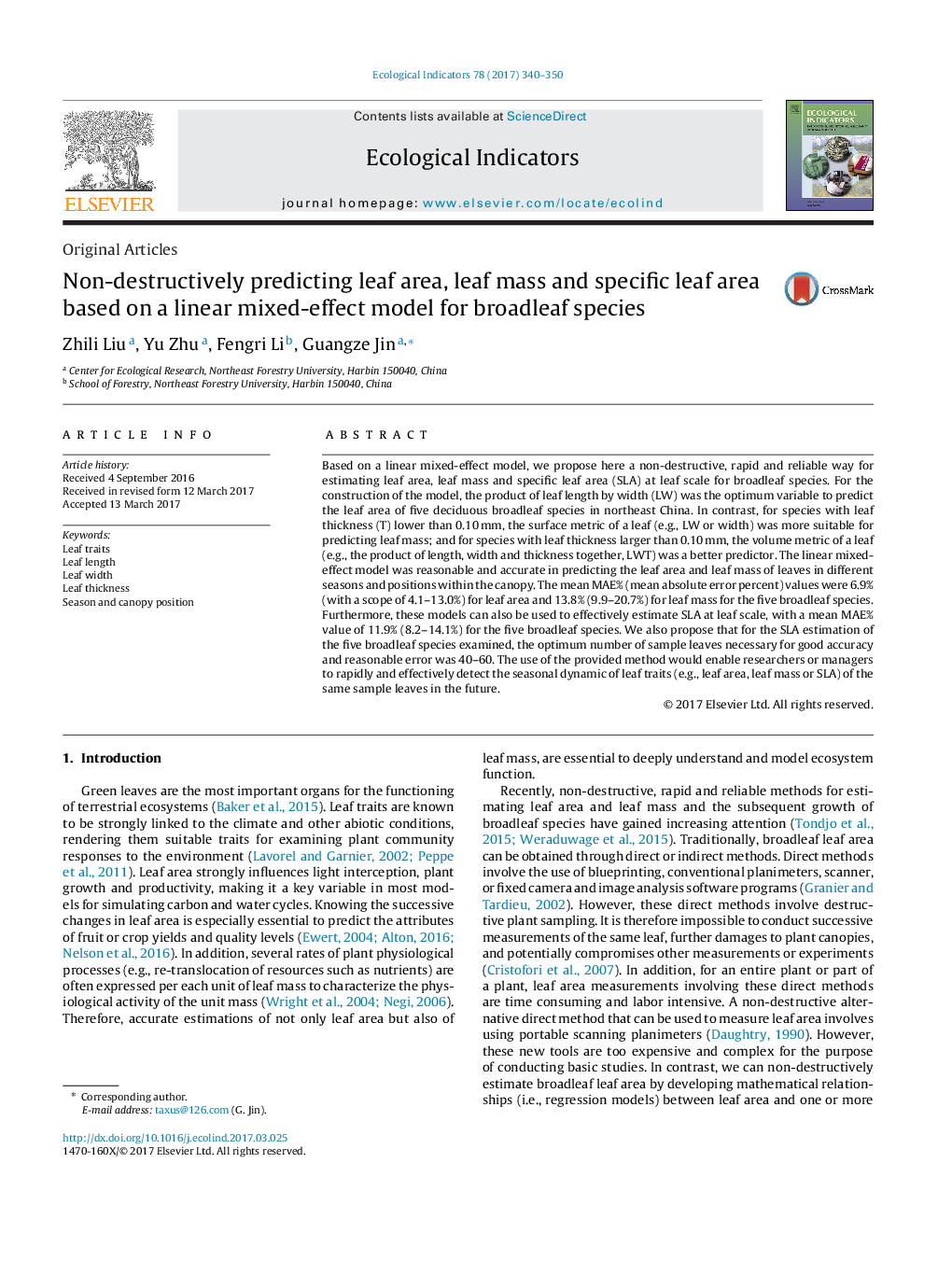| Article ID | Journal | Published Year | Pages | File Type |
|---|---|---|---|---|
| 5741642 | Ecological Indicators | 2017 | 11 Pages |
Abstract
Based on a linear mixed-effect model, we propose here a non-destructive, rapid and reliable way for estimating leaf area, leaf mass and specific leaf area (SLA) at leaf scale for broadleaf species. For the construction of the model, the product of leaf length by width (LW) was the optimum variable to predict the leaf area of five deciduous broadleaf species in northeast China. In contrast, for species with leaf thickness (T) lower than 0.10Â mm, the surface metric of a leaf (e.g., LW or width) was more suitable for predicting leaf mass; and for species with leaf thickness larger than 0.10Â mm, the volume metric of a leaf (e.g., the product of length, width and thickness together, LWT) was a better predictor. The linear mixed-effect model was reasonable and accurate in predicting the leaf area and leaf mass of leaves in different seasons and positions within the canopy. The mean MAE% (mean absolute error percent) values were 6.9% (with a scope of 4.1-13.0%) for leaf area and 13.8% (9.9-20.7%) for leaf mass for the five broadleaf species. Furthermore, these models can also be used to effectively estimate SLA at leaf scale, with a mean MAE% value of 11.9% (8.2-14.1%) for the five broadleaf species. We also propose that for the SLA estimation of the five broadleaf species examined, the optimum number of sample leaves necessary for good accuracy and reasonable error was 40-60. The use of the provided method would enable researchers or managers to rapidly and effectively detect the seasonal dynamic of leaf traits (e.g., leaf area, leaf mass or SLA) of the same sample leaves in the future.
Related Topics
Life Sciences
Agricultural and Biological Sciences
Ecology, Evolution, Behavior and Systematics
Authors
Zhili Liu, Yu Zhu, Fengri Li, Guangze Jin,
